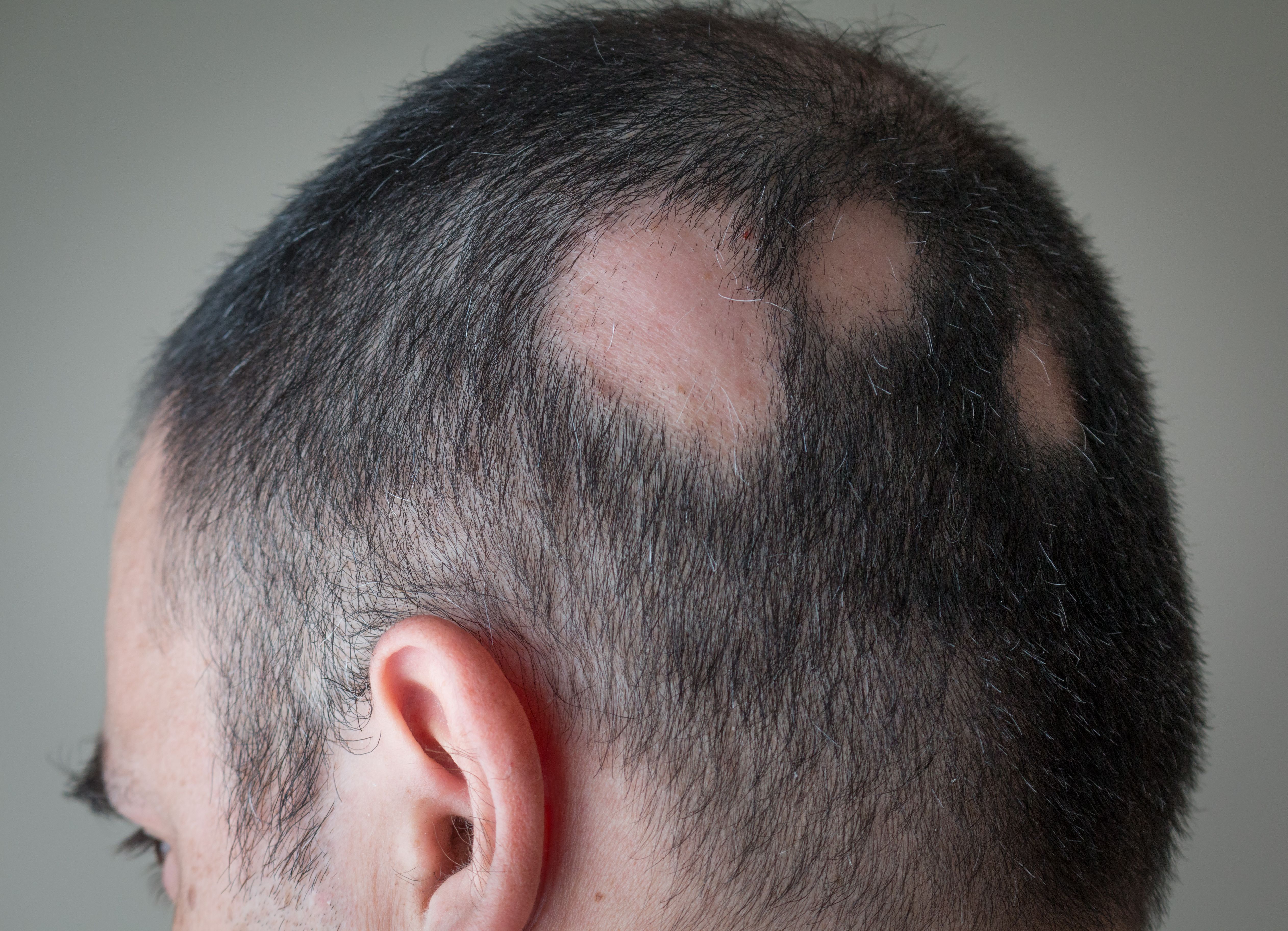- Acne
- Actinic Keratosis
- Aesthetics
- Alopecia
- Atopic Dermatitis
- Buy-and-Bill
- COVID-19
- Case-Based Roundtable
- Chronic Hand Eczema
- Chronic Spontaneous Urticaria
- Drug Watch
- Eczema
- General Dermatology
- Hidradenitis Suppurativa
- Melasma
- NP and PA
- Pediatric Dermatology
- Pigmentary Disorders
- Practice Management
- Precision Medicine and Biologics
- Prurigo Nodularis
- Psoriasis
- Psoriatic Arthritis
- Rare Disease
- Rosacea
- Skin Cancer
- Vitiligo
- Wound Care
Article
New Study Shows Prevalence of Alopecia Areata in People of Color
Author(s):
The findings of this cross-sectional study indicate alopecia areata, alopecia totalis, and alopecia universalis is more common in people of color, particularly Asian Americans.
Alex Papp/Adobe Stock

A recent US study shows people of color, especially Asian Americans, are more likely to have alopecia areata (AA), alopecia totalis (AT), and alopecia universalis (AU).1 Before this study, alopecia prevalence among racial and ethnic subgroups in the US were not well-established.
Researchers studied electronic records from the Explorys database, also known as Watson Health and IBM Corporation. Records showed health care administered to children, adolescents, and adults across 4 US census regions in 2019. Statistical analysis was performed in 2022 to look for AA, AT, and AU codes in health records.
The study showed 1812 of the 1,093,176 eligible patients had at least one code for AA. More than 65% of AA cases were female (n=1216) and more than 30% were male (n=33%). Cases of AT and AU made up approximately 9% of patients diagnosed with AA. Age and sex standardized occurrence among adults, children, and adolescents were observed to be 0.18% and 0.10%. Age-standardized prevalence ratio in women to men was 1.32. The most common age group diagnosed with alopecia was aged 30 to 39 (297 per 100,000) and aged 40 to 49 (270 per 100,000). Highest standardized prevalence was observed among Asian patients (414 per 100,000). Black and Hispanic/Latino patients had the second and third highest rates of AA, while White patients had the lowest AA prevalence.
“The findings of this cross-sectional study suggest there’s a significant burden of AA, AT, and AU in the US in which people of color, particularly Asian Americans, appear to be disproportionately affected,” the study said.
Research published in JAMA Dermatology earlier this year2 also revealed that patients with AA experienced symptoms of depression at a prevalence of 37% and symptoms of anxiety at 34%. While hair loss caused by alopecia can affect a patient’s mental health, there is optimism in derm space for treatment. One Dermatology Times® editorial board member shared insight at Winter Clinical Miami last month.3
“If you asked me this question 10 years ago, is alopecia areata important, you may hear that no, this isn't a disease that anyone cares about. It's largely cosmetic. But what we've learned over the past decade of research is that the psychosocial burden of this disease is huge,” shared Raj Chovatiya, MD, PhD, assistant professor of dermatology, director of the Center for Eczema and Itch, and medical director of the Clinical Trials Unit at Northwestern University Feinberg School of Medicine, in Chicago, Illinois First and foremost, hair, eyebrows, eyelashes, scalp…such an important part of our personal identity, that we're talking about a disfiguring autoimmune condition. I think that alone is a reason why we need to care as dermatologists.”
Chovatiya has become comfortable utilizing the first approved systemic therapy for patients with AA. Baricitinib, the Janus kinase (JAK) inhibitor helping patients with alopecia, was approved in June 2022.
“Based on data that we have so far, it looks like the best time to treat is when there's still some hair present. Once you have almost 95 to 99 or 100% hair loss, it becomes really hard to get the hair to regrow,” Chovatiya said.
References
1. Sy N, Mastacouris N, Strunk A, Garg A. Overall and Racial and Ethnic Subgroup Prevalences of Alopecia Areata, Alopecia Totalis, and Alopecia Universalis [published online ahead of print, 2023 Mar 1]. JAMA Dermatol. 2023;e230016. doi:10.1001/jamadermatol.2023.0016
2. Lauron S, Plasse C, Vaysset M, et al. Prevalence and odds of depressive and anxiety disorders and symptoms in children and adults with alopecia areata. JAMA Dermatology. 2023. doi:10.1001/jamadermatol.2022.6085
3. Chovatiya R. New JAK inhibitors for the treatment of alopecia areata. Presented at Winter Clinical Miami 2023; February 17-20, 2023; Miami, FL.
Newsletter
Like what you’re reading? Subscribe to Dermatology Times for weekly updates on therapies, innovations, and real-world practice tips.














